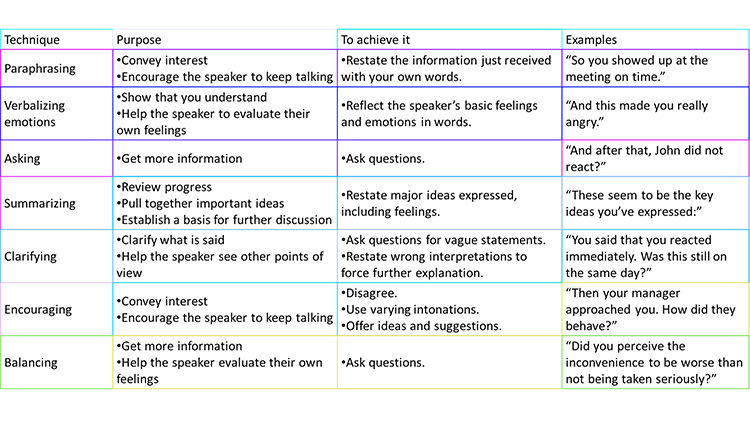Articles
5 Ways to Lead Your Team Through Change
- By Shannon Smith, J.D., M.S.
- Published: 12/1/2023
 As humans, we are hardwired to interpret change as a threat. However, by taking a neuroscientific approach to understanding our reactions, we can get better at managing change.
As humans, we are hardwired to interpret change as a threat. However, by taking a neuroscientific approach to understanding our reactions, we can get better at managing change.
Your boss just gave you the news that you, in fact, got that promotion you’ve been working so hard for all these years. As the initial dopamine surge starts to wear off and your nucleus accumbens settles, it hits you: You now have a team that is looking for you to lead them. Do you feel prepared to lead your team through uncertainty, ambiguity and change?
Here are five things you can do right now to prepare yourself:
1. Put your own oxygen mask on first.
The airlines are right: Don’t put the oxygen mask on your child first; put it on yourself. If you don’t help yourself first, you will become a liability. The same is true when you are experiencing change, especially at work.
You are a human first, and a manager second. You are going through a change yourself, and in order to be effective, you first have to address your own amygdala and cool your autonomic nervous system.
The amygdala is home to our fight, flight or freeze response. It processes our emotions, including fear, and links those emotions to memories, learning and the senses. And what is the number one response when someone is told a major change is coming? Fear.
So, how do you calm your amygdala?
- Become an objective observer of your own situation. This will create some space. After you’ve calmed down a bit, get back to it.
- Get present. Fall behind the eyes and breathe.
- Acknowledge. What is coming up for you?
- Don’t judge. There is no good or bad here, it just is.
- Let it go.
If you are wondering, there are a significant number of scientific studies that show meditation has scores of benefits and is an effective way to calm down that autonomic nervous system. Not only that, but it has been shown to slow the heart rate, alter neural activity in your amygdala, and improve your immune system.
The areas of the brain that are activated while mediating are involved in processing self-relevant information, self-regulation, focused problem-solving, adaptive behavior and introspection (Boccia and Guariglia 2015).
2. Be empathetic.
As a leader, this one should not be news to you. You already (hopefully) practice empathy with your teams, but now you will have even more experience because you just went through the change curve yourself. You know exactly how it feels, and how unsettling the entire experience is. Tap into that feeling when you are in front of your teams.
You can be an authentic, flawed human being and still be an effective leader. The truth is, when there is a change, very few people actually know what the impacts will be. Typically, the CEO, some executives, some consultants and maybe an advisory board are the only people who are anticipating all the changes. This means you don’t know all the details. The only thing you can promise your team is that you will help them through it.
Being fully transparent can be extremely powerful and build trust with your team. Call out the elephant in the room. Everyone knows it’s there anyway, right? Acknowledging your own fears and concerns can be comforting to your team and show how genuine you are.
3. Actively listen to inform your next moves.
Active listening is such an underrated and underused skill. Researchers examined the effects of active listening in organizations and found that when employed, active listening can improve job satisfaction, reduce defensiveness to feedback and performance appraisals, increase diversity and tolerance, encourage voice behavior and improve negotiating proficiency (Kluger & Itzchakov 2021).
It can also inform your next steps. Active listening allows you to understand your team so that you can truly help them. A quick Google search will get you to an abundance of ways, such as this table from Positive Psychology, to employ the technique.
4. Acknowledge your team’s amygdala.
Now you know how your amygdala and autonomic nervous system show up when an organizational change is announced. It is the same way for your team. So, how can you help them?
- Listen to their concerns and fears.
- Validate how they are feeling.
- Acknowledge the elephant in the room.
- Don’t make promises you can’t keep.
- Support them and address their concerns and fears where you can.
5. Help your team envision their WIIFM (What’s in it for me?).
Everyone wants to know how things will impact them in their day to day. Self-preservation and self-interest are very human things; it’s the way we are wired. Helping your team visualize a positive outcome from the new policy, procedure, technology, etc., is an important step in helping them to embrace the change. Following are two fascinating studies that highlight the importance of visualization.
Study One: In the Finger Exercise Study with Guang Yue at the Cleveland Clinic, participants were divided into three groups. All had their finger strength measured to establish a benchmark. One group received baby barbels and was told to exercise 15 minutes a day, five days per week, for 12 weeks. The second group received no baby barbels and were told to only visualize the finger exercises for 15 minutes a day, five days per week, for 12 weeks. The third group was a control group and was therefore given no instructions.
The first group showed an increase in finger strength after the study. The control group observed no difference. The second group, the visualization group, increased their finger strength by 35% just by visualizing themselves doing the exercises. Based on these results, it appears that it’s possible to get a ~35% benefit from your fitness goals if you just visualize the exercise.
Study Two: Kai Miller at the University of Washington showed that imaginary exercise activates the same areas in the brain that are activated during actual exercise, further validating Miller’s study, and illustrating the validity of visualization. Visualization is indeed a powerful tool.
Following the findings of these studies, you, too, can guide your team through the exercise of visualization without calling it out. Simply ask them the questions below.
- What are the benefits they will experience?
- What will work be like for them once the changes are made?
- How will it feel to be able to do x, y and z?
- How will it feel not having to endure some of the pain points they are currently experiencing?
- How much time and frustration will it save?
You can do it too. Imagine it’s Monday morning, and you are about to walk into your first-ever meeting with your team as their leader. You get a little jostle of adrenaline as you reach for the door handle. And as you walk through the door with quiet confidence, you feel a surge of excitement and assurance that you can and will effectively lead your team through any change.
Citations
Boccia, M., Piccardi, L., & Guariglia, P. (2015). The Meditative Mind: A Comprehensive Meta-Analysis of MRI Studies. BioMed Research International. doi: 10.1155/2015/419808
Kluger, A. N., & Itzchakov, G. (2022). The Power of Listening at Work. Annual Review of Organizational Psychology and Organizational Behavior, 9, 121-146. https://doi.org/10.1146/annurev-orgpsych-012420-091013
McGann, J.P. (2015). Associative learning and sensory neuroplasticity: how does it happen and what is it good for? Learning & Memory. 22, 567-76. doi: 10.1101/lm.039636.115. PMID: 26472647; PMCID: PMC4749728
Miller, K. J., Schalk, G., Fetz, E. E., & Rao, R. P. N. (2010). Cortical activity during motor execution, motor imagery, and imagery-based online feedback. Proceedings of the National Academy of Sciences of the United States of America, 107(9), 4430-4435. https://doi.org/10.1073/pnas.0913697107
Ranganathan, V. K., Siemionow, V., Liu, J. Z., Sahgal, V. & Yue, G. H. (2004). From mental power to muscle power—gaining strength by using the mind. Neuropsychologia, 42(7), 944-956. https://doi.org/10.1016/j.neuropsychologia.2003.11.018
Copyright © 2024 Association for Financial Professionals, Inc.
All rights reserved.

